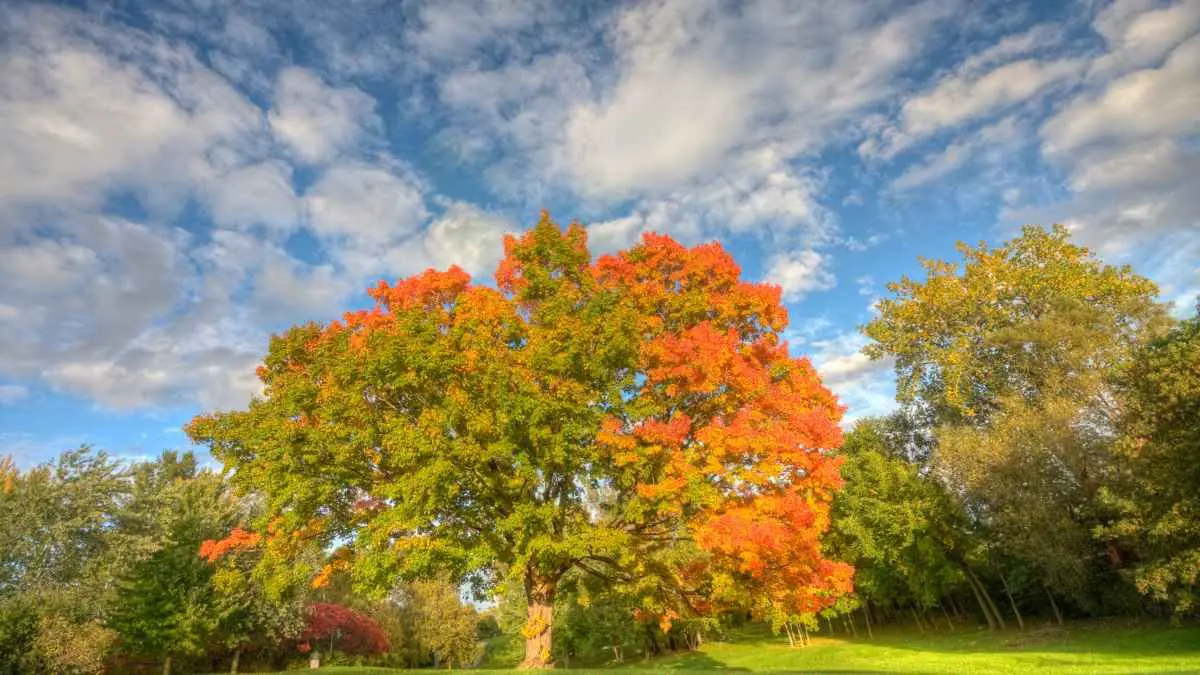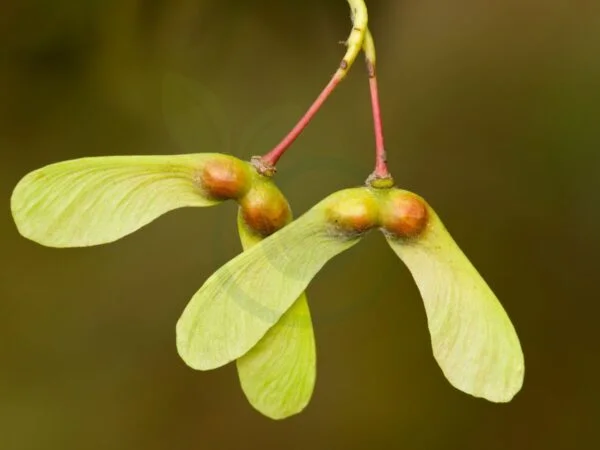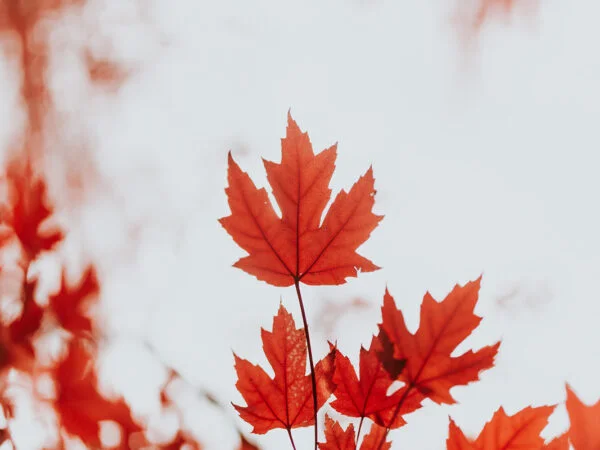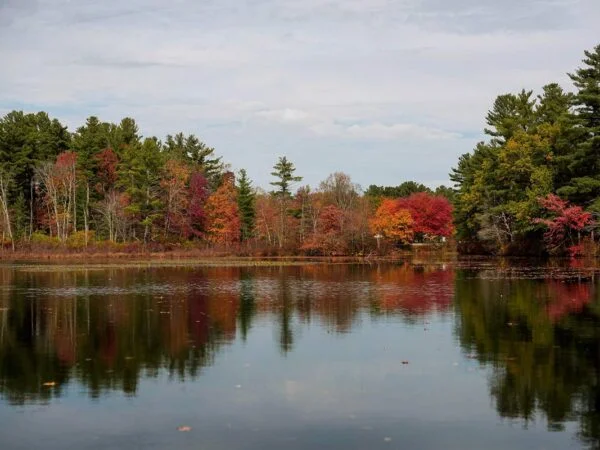Maple trees boast a remarkable life span, and I'm here to guide you through it. Understanding the life span of a maple tree is essential for anyone interested in gardening or forestry management.
The life span of a maple tree typically ranges from 100 to 300 years, depending on the species and environmental conditions. Some species, like the sugar maple (Acer saccharum), can live for up to 300 years, while others, such as the red maple (Acer rubrum), have a shorter life span of around 100 years. Factors like soil quality, climate, and disease resistance play significant roles in determining the longevity of these trees in the forest.
If you're fascinated by the resilience and beauty of maple trees in forest areas, there's so much more to discover about their growth patterns, ecological significance, and cultural importance in various societies. Let's delve deeper into the fascinating world of maple trees together!
Key Takeaways
- Understanding Maples: Knowing the basics about maple trees is essential for maximizing their lifespan.
- Environmental Influences: Environmental factors play a crucial role in determining the range of years a maple tree will live in the forest.
- Species-Specific Longevity: Different types of maple trees have varying lifespans, so it's important to choose the right species for longevity in the north.
- Threats to Longevity: Being aware of potential threats like diseases and pests can help protect maple trees and extend their lifespan.
- Cultivation Practices: Proper care and maintenance through cultivation practices can significantly enhance the lifespan of maple trees.
- Preserving Maple Heritage: By understanding and preserving the heritage of maple trees, we can ensure their longevity for future generations.
Understanding Maples
Species Variability
Maple trees come in various species, distinguished by leaf shape and color. The genetic variability within the maple tree family results in unique characteristics. This variability impacts growth patterns and adaptability to different environments.
e species of maple trees are known for their vibrant red leaves, while others display a more traditional green color. The diversity within the maple family contributes to the richness of forests and landscapes worldwide. Certain species thrive in specific regions due to their genetic makeup.
Understanding the genetic variability among maple tree species is essential for conservation efforts and sustainable forestry practices. By recognizing the distinct traits of each species, researchers can better protect and preserve these valuable trees for future generations.
Natural Habitats
Maple trees typically thrive in temperate forests with well-drained soil and moderate climates. These trees prefer areas with ample sunlight and moisture, allowing them to grow healthily and produce vibrant foliage. The specific soil composition and climate conditions play a crucial role in supporting maple tree growth.
The natural habitats where maple trees flourish provide essential resources for their development. Factors such as temperature fluctuations, rainfall levels, and soil nutrients influence the overall health and longevity of these trees. By understanding the significance of natural habitats, we can better appreciate the intricate relationship between maples and their environment.
- Pros:
- Maple trees contribute to biodiversity in forest ecosystems.
- They offer shade and aesthetic beauty in urban landscapes.
- Cons:
- Some maple tree species are susceptible to diseases.
- Climate change poses a threat to the survival of certain maple varieties.
Growth Patterns
Maple trees undergo significant growth transformations from tiny seedlings to towering mature trees. Factors such as nutrient availability, sunlight exposure, and water supply influence the growth rate of these trees. Understanding these growth patterns is crucial for predicting the life span of maple trees.
As maple trees mature, they develop sturdy trunks, expansive root systems, and dense canopies that provide habitat for various wildlife species. By observing the growth patterns of maples over time, researchers gain insights into their resilience and ability to withstand environmental challenges.
Average Lifespan
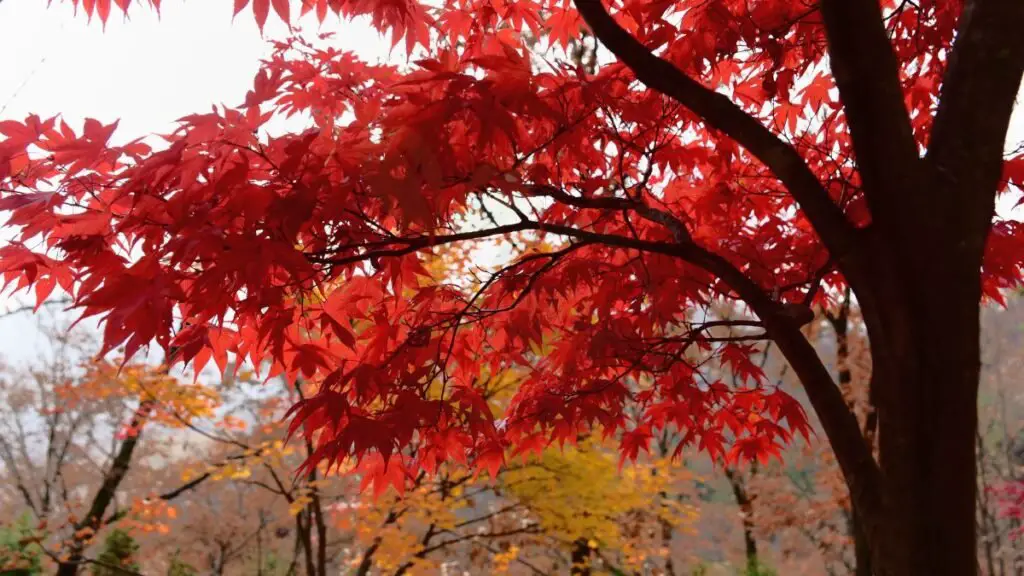
In Wild
Maple trees in the wild experience a range of environmental factors that influence their life span. They interact with various plant and animal species, creating a diverse ecosystem. The challenges they face, such as competition for resources and natural disasters, can impact their longevity.
When growing in the wild, maple trees compete with other plants for sunlight, water, and nutrients. This competition affects their growth rate and overall health. Interactions with animals like deer can lead to physical damage to the trees, affecting their ability to thrive.
In their natural habitat, maple trees are susceptible to diseases and pests that can weaken them over time. These threats, combined with climate changes and extreme weather events, pose significant challenges to their survival. As a result, the average life expectancy of maple trees in the wild is lower compared to cultivated ones.
In Cultivation
Cultivating maple trees involves specific practices to ensure optimal growth and longevity. By controlling factors like soil quality, watering schedules, and sunlight exposure, growers can enhance the tree's health and extend its life span. However, this process requires consistent care and attention.
Compared to wild maple trees, cultivated ones tend to have a longer life span due to controlled growing conditions. Growers can protect them from natural threats and provide necessary nutrients for robust growth. Despite these benefits, cultivating maple trees requires significant effort and resources.
Pros:
- Controlled environment leads to healthier trees
- Protection from natural threats increases longevity
Cons:
- Demands consistent care and attention
- Requires substantial resources for cultivation
Environmental Influences
Soil Quality
Maple trees rely on healthy soil for growth and longevity. Different soil types impact tree health differently. Sandy soil drains quickly, while clay soil retains moisture, affecting maple trees' ability to absorb nutrients. To enhance soil quality, consider adding organic matter like compost or mulch to improve drainage and nutrient retention.
Climate Conditions
Climate conditions play a vital role in determining the life span of maple trees. Temperature fluctuations and precipitation levels directly influence tree health. Extreme heat or cold can stress the trees, impacting their growth and longevity. Despite these challenges, maple trees showcase remarkable resilience to varying climate conditions, adapting to survive in different environments.
Water Availability
Adequate water availability is crucial for the survival of maple trees. Drought conditions can lead to water stress, affecting the tree's overall health and life span. Conversely, excessive moisture can cause root rot and other diseases that jeopardize the tree's longevity. To maintain optimal water levels for maple trees, ensure consistent watering during dry periods and proper drainage to prevent waterlogging.
Species-Specific Longevity
Sugar Maple
Sugar maple trees, known for their vibrant fall foliage, have distinctive lobed leaves and dense wood. They thrive in moist, well-drained soils in temperate climates. With their high sap sugar content, they are crucial for maple syrup production. These trees also play a vital role in forest ecosystems by providing habitat and food for various wildlife species.
- Preferred habitats: Moist soils in temperate regions
- Growth requirements: Well-drained soil, temperate climate
- Economic importance: High sap sugar content for maple syrup production
- Ecological importance: Provides habitat and food for wildlife
Red Maple
Red maple trees stand out with their red flowers in spring and red leaves in the fall. They are highly adaptable to various environments, thriving in both wet and dry soils. Red maples hold significant cultural value in different regions, often symbolizing strength, beauty, or even love.
- Distinctive features: Red flowers in spring, red foliage in fall
- Adaptability: Thrives in wet and dry soils
- Cultural significance: Symbolizes strength, beauty, and love
Japanese Maple
Japanese maple trees are prized for their ornamental beauty, featuring delicate leaves and stunning colors. These trees require partial shade and well-drained soil to flourish. In Japanese culture, they symbolize peace, serenity, and balance, often found in traditional gardens and landscapes.
- Ornamental value: Delicate leaves and vibrant colors
- Care requirements: Partial shade, well-drained soil
- Symbolism: Represents peace, serenity, and balance
Threats to Longevity
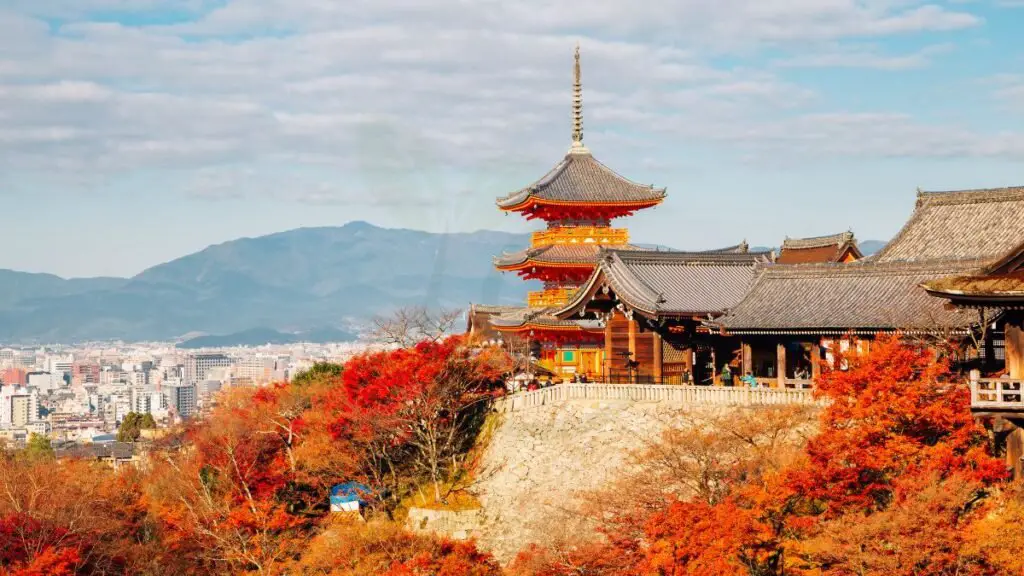
Pests and Diseases
Maple trees are susceptible to various pests and diseases that can significantly impact their life span. Common pests include aphids, scale insects, and caterpillars, while diseases like anthracnose and verticillium wilt pose serious threats. These issues can weaken the tree's immune system and lead to premature decline.
To prevent pest infestations, maintaining overall tree health is crucial. Regularly inspecting for signs of pests, such as leaf discoloration or abnormal growth, allows for early intervention. Pruning infected branches and promoting proper air circulation around the tree can help reduce pest populations. In cases of severe infestation, applying appropriate insecticides may be necessary.
When it comes to diseases, implementing good cultural practices is essential. Avoiding overhead watering to prevent fungal growth, ensuring proper drainage, and removing infected plant debris are key steps in disease prevention. For effective treatment, fungicides or bactericides tailored to specific diseases can be applied following expert recommendations.
The presence of pests and diseases not only weakens maple trees but also hinders their ability to photosynthesize efficiently, impacting overall growth and vitality. If left unchecked, these issues can lead to stunted development and even tree mortality over time.
Environmental Stress
Environmental stressors like drought, extreme temperatures, soil compaction, and pollution can take a toll on maple trees' health. Such stress factors disrupt normal physiological processes within the tree, affecting nutrient uptake and water absorption. Over time, prolonged exposure to these stressors can weaken the tree's resilience.
To mitigate environmental stress and promote longevity in maple trees, adopting proper watering practices is essential. Providing adequate moisture during dry periods helps maintain root health and overall hydration levels. Mulching around the base of the tree aids in moisture retention and temperature regulation in the soil.
Furthermore, addressing soil compaction through aeration techniques promotes root development and enhances nutrient uptake efficiency. Regular monitoring of environmental conditions allows for timely interventions to safeguard maple trees from stress-related damage.
Cultivation Practices
Planting Techniques
Plant maple trees in well-drained soil with adequate sunlight for optimal growth. Ensure proper spacing between trees to prevent overcrowding. Adequate soil preparation before planting is crucial for healthy root development.
Effective planting techniques play a vital role in the longevity of maple trees. By providing the right conditions during planting, such as sufficient nutrients and moisture, you can promote strong and robust tree growth.
Soil Management
Implement strategies for effective soil management to support maple tree growth, including mulching and fertilization. Mulching helps retain moisture and regulate soil temperature, while fertilization provides essential nutrients for tree health.
Mulching not only improves soil health but also suppresses weed growth around maple trees. Regular fertilization ensures that the soil remains nutrient-rich, supporting the tree's overall well-being.
Pruning and Care
Regular pruning is essential for maintaining maple tree health and promoting longevity. Remove dead or diseased branches to encourage new growth and prevent the spread of diseases within the tree.
Different maple tree species may require specific pruning techniques tailored to their growth patterns and characteristics. Consult with experts or arborists to ensure proper pruning practices are followed for each type of maple tree in your garden.
Proper care and maintenance, including watering, pest control, and monitoring for signs of disease, are crucial factors in extending the life span of maple trees. Regular inspections can help identify issues early on and prevent them from escalating.
Enhancing Lifespan
Mulching and Watering
Mulching benefits maple trees by retaining moisture in the soil and controlling weeds effectively. Proper mulching helps maintain soil temperature, prevents erosion, and reduces competition from other plants. Watering should be done deeply but infrequently to encourage deep root growth, preventing surface roots that are susceptible to drought stress. Overwatering can lead to root rot, while underwatering can cause leaf wilting and stunted growth. Mulching and watering play a crucial role in promoting the overall health and longevity of maple trees.
Fertilization Strategies
Fertilization is essential for maple tree growth as it provides necessary nutrients for healthy development. Different types of fertilizers such as organic or synthetic can be used based on soil conditions and tree requirements. Developing an effective fertilization schedule involves considering factors like tree age, soil quality, and specific nutrient deficiencies. A balanced fertilizer with a proper ratio of nitrogen, phosphorus, and potassium is crucial for optimal maple tree health.
Maple in Landscapes
Choosing the Right Species
Selecting the appropriate maple trees for landscaping is crucial. Consider location and climate when choosing a species. Match the tree to specific environmental conditions for optimal growth.
Factors to consider include sun exposure, soil type, and moisture levels. Some species thrive in colder climates, while others prefer warmer regions. Ensure the tree's needs align with your area's conditions.
Matching the right species to its environment promotes healthy growth and longevity. Consult with local nurseries or arborists for expert advice on selecting the best maple tree for your landscape.
Design Considerations
Incorporating maple trees can greatly enhance the aesthetic appeal of outdoor spaces. Their vibrant fall foliage adds color and interest to any landscape design. Consider using them as focal points or creating a grove for a dramatic effect.
Maple trees offer versatility in design styles, from traditional to modern landscapes. Integrate them into various themes like Japanese gardens or woodland retreats. Their unique leaves and bark textures provide visual interest year-round.
When planning your landscape design, ensure proper spacing between trees for healthy growth. Consider factors like root spread and canopy size to avoid overcrowding. Incorporate other plants and hardscape elements to complement the maple trees.
Preserving Maple Heritage
Conservation Efforts
Conservation efforts focus on protecting maple tree populations by preserving their natural habitats. Organizations and volunteers work tirelessly to ensure the survival of these iconic trees. Community participation plays a crucial role in safeguarding maple trees for future generations.
Genetic diversity within maple tree populations is essential for their long-term survival. By conserving different varieties and species, we can maintain a healthy ecosystem. Preserving maple habitats also benefits other wildlife that rely on these trees for food and shelter.
Engaging in conservation initiatives helps raise awareness about the importance of maple trees in our environment. By educating the public about the threats facing these trees, we can foster a sense of responsibility towards their preservation. Collaborative efforts are key to ensuring the longevity of maple tree populations.
Educational Programs
Educational programs play a vital role in spreading awareness about maple trees and their significance. Schools, nature centers, and environmental organizations offer programs that teach students about the ecological importance of maples. Learning about maples helps individuals understand the value of these trees in our ecosystems.
Teaching about maple tree ecology provides valuable insights into how these trees contribute to biodiversity and ecosystem health. Students learn about the lifecycle of maples, from sap production to seed dispersal, fostering a deeper appreciation for these majestic trees. Educational resources such as workshops, field trips, and online materials offer diverse opportunities for learning about maples.
Final Remarks
Understanding the life span of maple trees is essential for preserving their beauty in landscapes and gardens. Factors like species, environment, and cultivation practices play a significant role in determining the longevity of these beloved trees. By enhancing their life span through proper care and maintenance, you can ensure that maples continue to grace your surroundings for generations to come. Remember, a little effort in nurturing these trees can go a long way in enjoying their beauty and benefits.
Take action today by implementing the tips shared in this article to enhance the life span of maple trees in your area. By incorporating these practices into your gardening routine, you contribute to the preservation of maple heritage and create a lasting impact on the environment. Let's work together to ensure that maple trees thrive and beautify our surroundings for years to come.
Frequently Asked Questions
What factors influence the average lifespan of a maple tree?
Maple tree lifespan is influenced by environmental conditions, species-specific characteristics, and threats like diseases or pests. Cultivation practices and landscape management also play a role in determining the longevity of maple trees.
How can I enhance the lifespan of a maple tree in my garden?
To enhance the lifespan of a maple tree, ensure proper care such as regular watering, mulching, and pruning. Protect the tree from diseases and pests, provide adequate sunlight and nutrients, and maintain good soil quality to support healthy growth.
Why are maples popular in landscapes?
Maples are popular in landscapes due to their vibrant foliage colors, unique shapes, and adaptability to various climates. They offer aesthetic appeal throughout the seasons, providing shade in summer and stunning fall colors, making them desirable choices for many garden designs.
How can we preserve the heritage of maple trees?
Preserving the heritage of maple trees involves conservation efforts to protect native species, promote sustainable cultivation practices, and raise awareness about the importance of maples in ecosystems. By planting native maples and supporting conservation initiatives, we can safeguard their genetic diversity for future generations.
Image Source: Paid image from CANVA

